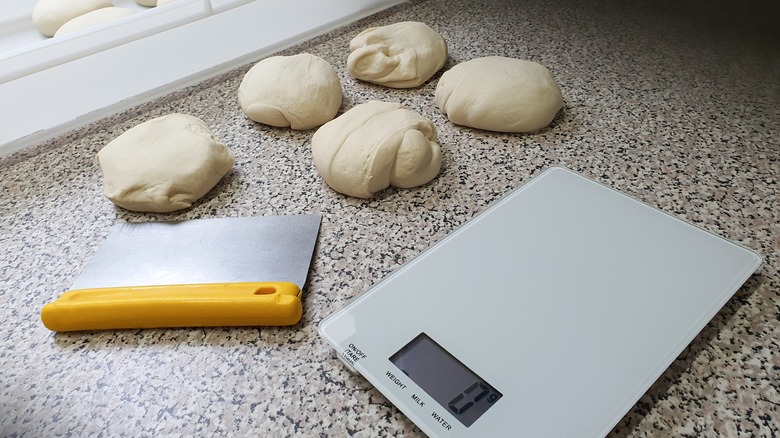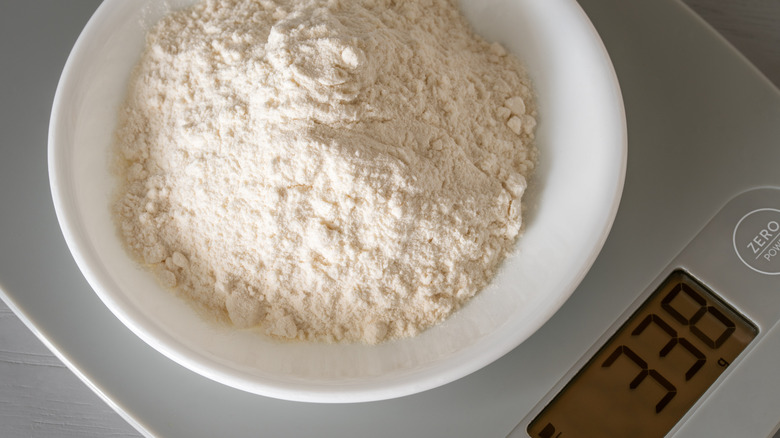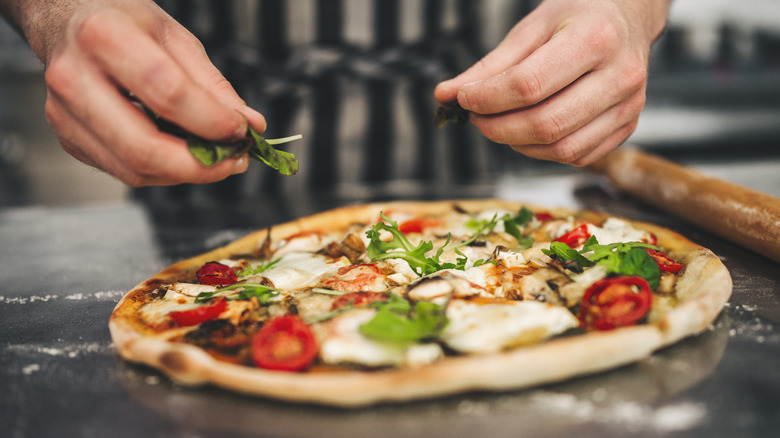Why A Kitchen Scale Is Essential For Homemade Pizza
Takeout pizza is a classic treat for everything from sleepovers to parties, post-moving-day hangouts to lazy weeknights, but it has downsides. If you're having takeout, you have to drive to the restaurant to collect a pie that doesn't always taste fresh. If you're getting delivery, the pizza often comes lukewarm, soggy, and disheveled. Homemade pizza, though, is hard to beat. Hot from your oven, with just the right amount of sauce, cheese, and toppings on a perfectly textured crust — it checks all your personal pizza boxes when it's done well. So you've got to get it right.
That starts at the pizza's foundation. When you elevate your homemade pizza by making your own simple pizza crust, rather than buying premade from a store, the pizza you make will straddle the world between the art of cooking and the science of baking. The process won't just be a matter of tasting the sauce to adjust the seasonings or measuring the toppings to suit your preference. You'll be entering the world of fermentation and baking, which requires precision and care. And, as with any baking project, the results will always be better when you use a kitchen scale to measure the dough ingredients.
Weigh your ingredients for the perfect pizza dough
In cooking, preference and experimentation are key; you'll taste and season the sauce as it simmers or char vegetables to your own texture inclination. There are always exceptions, but most recipes aren't defeated by small adjustments. However, in baking, you're dealing with chemical reactions, which need precision to happen correctly. If your cookies have a little too much flour, it will affect the texture and bake time; the wrong amount of baking soda in your cake will ruin the leavening activation. The same applies to pizza crust: it needs a precise formula to ferment and bake the right way.
Even if your measuring cups are accurate themselves (which they often aren't), measuring ingredients is a judgment call. Packing flour versus scooping it versus sifting it can mean several tablespoons of deviation, and shaking off the teaspoon of yeast isn't the same amount as leveling it. While this may not sound significant, the variation will affect your baking formula and can mean the difference between a fluffy pizza crust and one that's dense and dry.
However, weight will always stay the same, and there's no need to eyeball it. If your pizza dough recipe calls for 250 grams of flour, you can weigh it out on your kitchen scale without worrying about how level your scoop is or how tightly you packed it. You'll get the same amount every time, ensure a consistent crust, and dish out the best homemade pizza.
Other mistakes affecting your homemade pizza perfection
Homemade pizza might seem like little more than easy assembly, but there are other secrets to its deliciousness than just weighing out your dough ingredients to amp up your pizza crust. Once you have all the ingredients mixed together and the dough is ready to be shaped, you'll want to set the rolling pin aside. Although the method requires less elbow grease than working the dough out with your hands, a rolling pin removes too much air and too many bubbles, which can make the pizza crust tougher and less light and fluffy.
The next step is putting all the parts together. You may be a fan of the sausage-pepperoni-ham-pineapple-spinach-olive-pepperoncini pie at your local pizza joint (perhaps going by an intense name, like "The Meathead" or "Pizzapocalypse"), but homemade pizza thrives on simplicity. That number of pizza toppings needs a hefty crust and an extremely hot oven, but at home, piles of ingredients can weigh down your crust, make it soggy if they release a lot of water, and create an uneven cooking time. While the excessive toppings take their time to cook through, the crust can get overcooked or even burnt. As long as you follow a few simple rules, though, a slice of homemade pizza can't be beaten.


